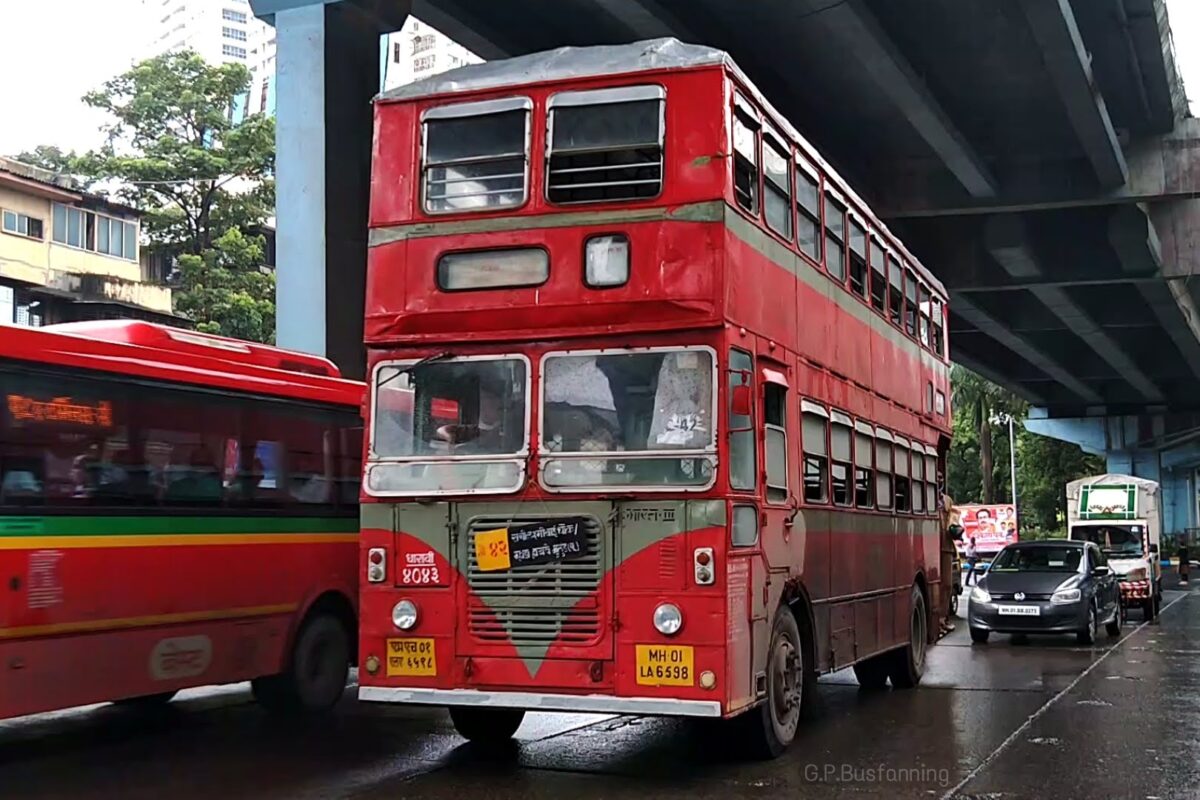In what can only be described as good news for both transit fans and history buffs alike, the Maharashtra Government has agreed to save one Bharat Stage 3 (BS3) Double Decker bus of the Brihanmumbai Electricity Supply and Transport (BEST) undertaking at the Anik Depot instead of scrapping it. This decision came from no less than the Chief Minister’s office. Apart from this, Dr Shrikant Shinde, Member of Parliament from Kalyan and son of CM Eknath Shinde has also promised to take up the matter.
As reported by Rajendra Aklekar for Mid-Day, this happened purely due to the initiative of three bus fans, particularly Shubham Padave, an IT professional from Mumbai with whom I have had the pleasure of interacting over Twitter in the past. Padave wrote to the BEST administration requesting them to preserve one bus. Since he did not get a satisfactory response, he took things a notch higher and directly wrote to the CM’s office and got a positive response.
The second bus fan is none other than Rupak Dhakate, whose posts in the past have been featured on this blog. Rupak was the ace photographer who snapped the glorious click of the bus chowky at Maharana Pratap Chowk in Mazagaon, helped bust the fake news that Oshiwara Depot was shutting down, and also created the amazing BEST Quarantine Challenge during the first lockdown in 2020. In 2020, Rupak started an initiative to ensure that at least one bus of every model is preserved at BEST’s museum at Anik. He rightly says that the double-decker bus is not just a bus but an emotion, and I cannot agree more with him.
The third bus fan is our very own Gandharva Purohit, who has written some really insightful posts on BESTpedia in the past. Don’t forget to read them here, if you haven’t already. Gandharva has made a great argument in favour of preserving heritage buses at BEST’s Museum at Anik on the lines of the London Transport Museum at Covent Garden, London. He also says that BEST can organise open-day events and sell souvenirs.
As of now, BEST has 12 of the new electric Switch double deckers and three open-top variants of the old fleet housed at the Colaba depot, and the remaining 19 of the classic double deckers are house at Marol and Dharavi. The Backbay, Kurla and Worli depots stopped housing double deckers when they were scrapped in 2020.
In 2021, Aklekar had reported on Mid-Day that the Manjusha Museum in Dharmasthala, Karnataka had paid ₹12 lakh for two double decker buses – ₹5 lakh for an open-top one and ₹7 lakh for a regular double decker – to be housed at the museum that houses over 8,000 artefacts.
Overall, this is a win for the transit heritage community. I personally feel that every city in India, especially the ones that got public transport right from the independence era should make a serious effort towards preserving older vehicles in museums to showcase the evolution of public transport to future generations.
That’s all from me this time.
Featured Image: Bus 4043 of the Dharavi Depot operating on Route C-42. Photo clicked by GP.Busfanning
Note to the mainstream media and Youtubers: The photograph featured above is copyright GP.Busfanning and has been used on BESTpedia with permission. Do not flick the image without permission from GP.Busfanning.
![]()


2 thoughts on “A Classic Double Decker Has Been Saved From Scrap, Will Now Be Preserved”